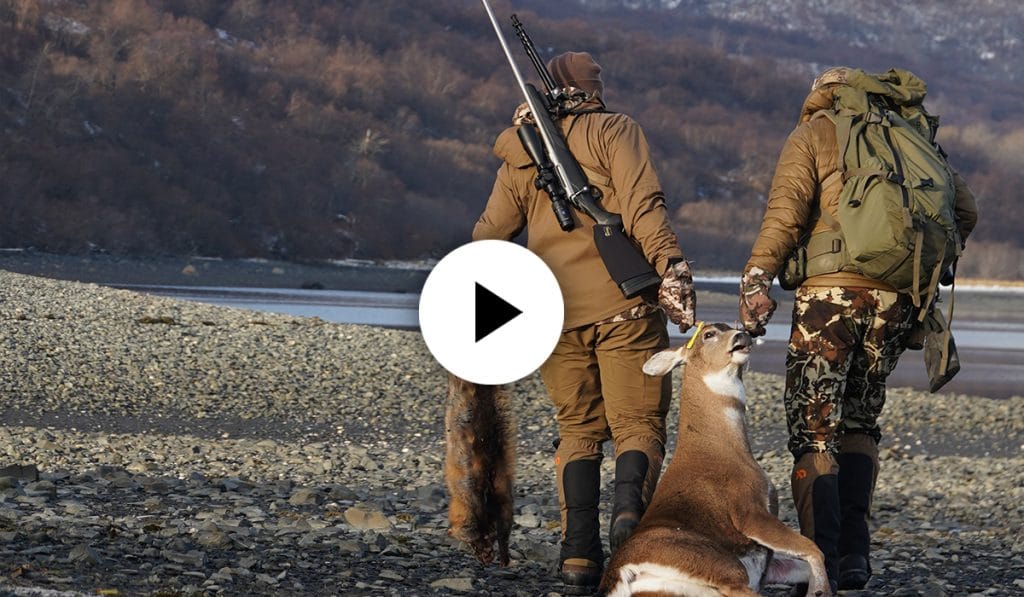“We shot the first buck of the trip near last light during the first afternoon on Kodiak. Packing out, we got partway and we could see the boat’s lights in the distance. We radioed and said, ‘Hey, we’re coming out heavy, and are on our way to the beach now,’ and I think we said something like ‘We should be there in 20 or 30 minutes.’ In fact, it took us well over an hour and a half. You look at the terrain in Kodiak and you’re like, ‘Oh, it’s just right there. It won’t take that long to hike.’ But, in most places, the brush is chest high. It’s super thick and nasty, and every step you take feels like somebody’s grabbing your ankles trying to keep you from moving forward. It ends up taking way longer than you’d think. At one point on the way down, trying to navigate in the dark, we also ended up getting cliffed out.
The captain of the boat, Garrett Lambert (“G” for short), replied on the radio letting us know there had been two different brown bears seen in our path, not long before dark. He was like, ‘You should be good, but just keep an eye out.’ Part of that hike down I was walking first, leading with my headlamp. I came around a corner and saw eyes reflecting about 40 yards ahead of us through thick willows. I was like, ‘F*** that,” and we backed up and made a big loop around the other way.
Finally, we hit the beach well after dark, drenched in sweat, still wondering how close the brown bears were as we waited for the skiff to come pick us up and take us to the boat. The tide had changed since being dropped off, requiring us to wade knee-deep into the ocean with heavy packs before being able to climb into the skiff. It was an intense start to our week in Kodiak.”

In late October of 2020, Dylan D. from the onX Hunt Marketing team joined onX team member Matt S. and the guys from HUSHIN for a hunt of a lifetime in Kodiak, Alaska. In true 2020 style trip logistics presented unique challenges, but the team arrived safely in Alaska and kicked off the trip with a few days of incredible king salmon, rockfish, and halibut fishing near Homer with Captain Cory Loos of Dakota Ocean Charters. Once the fishing rods were put away, the real work started.
Watch the full eight episodes of KODIAK filmed during this hunt here.
We sat down with Dylan to talk a bit about what went down in Alaska.
Jess (onX Hunt Creative Team): So how did this trip come about, especially in a summer when travel was challenging?
Dylan: I think I found out about the hunt three or four months before boarding the plane. Friends of a friend were organizing the trip, and originally we were going to travel to Kodiak by boat after fishing for a few days. Traveling by boat would require us to stop midway, at a small native town, for fuel. But due to COVID they completely stopped anything to do with travel and nobody from outside the village could be there. We were luckily able to book a last minute spot with Ninilchik Charters, a transporter on Kodiak, due to a cancellation. So, we ended up flying from Anchorage to Kodiak City, then taking a small plane to the other side of the island, where we met up with our boat charter.
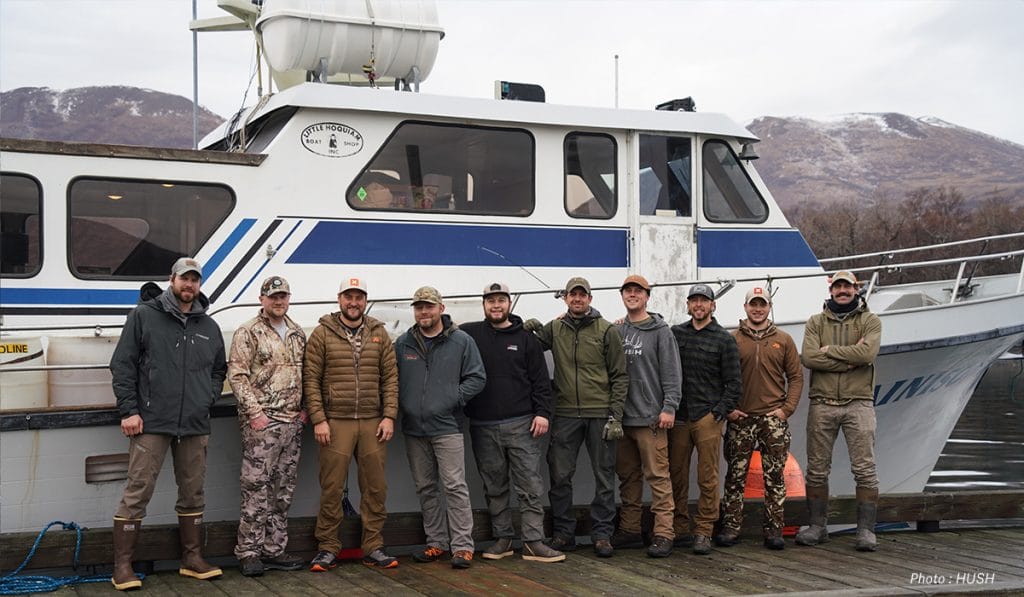
Jess: So plans changed. How was the travel process?
Dylan: It was pretty crazy going into the airport in Anchorage. We had to wait in line for quite a while; not to get tested but to basically show that we had been tested before leaving home and to get our temperature taken. We basically were playing everything day to day. We thought, “Tomorrow, they might say that we aren’t allowed to come.” Travel restrictions might change. So it was kind of nerve-wracking in that sense.
Jess: Once you made it to Alaska, what was your set-up?
Dylan: We were based on a boat for this hunt. Besides Garrett the captain and boat hand Brandon, we had eight guys hunting so there were 10 of us on the boat. Everything’s on the boat, but it’s a transporter only. It’s not guided. So Garrett (the captain) can’t say “Hey, I see a deer on the beach,” or recommend where we hunt for the day. We were responsible for planning our hunts and letting them know when and where we wanted to be dropped off and picked up each day. So it was still a do-it-yourself type hunt, but what we had paid for was the boat— sleeping arrangements and meals. The boat had three freezers on it for meat, and a washer / dryer on it so you could dry out your clothes at night, which was super nice.
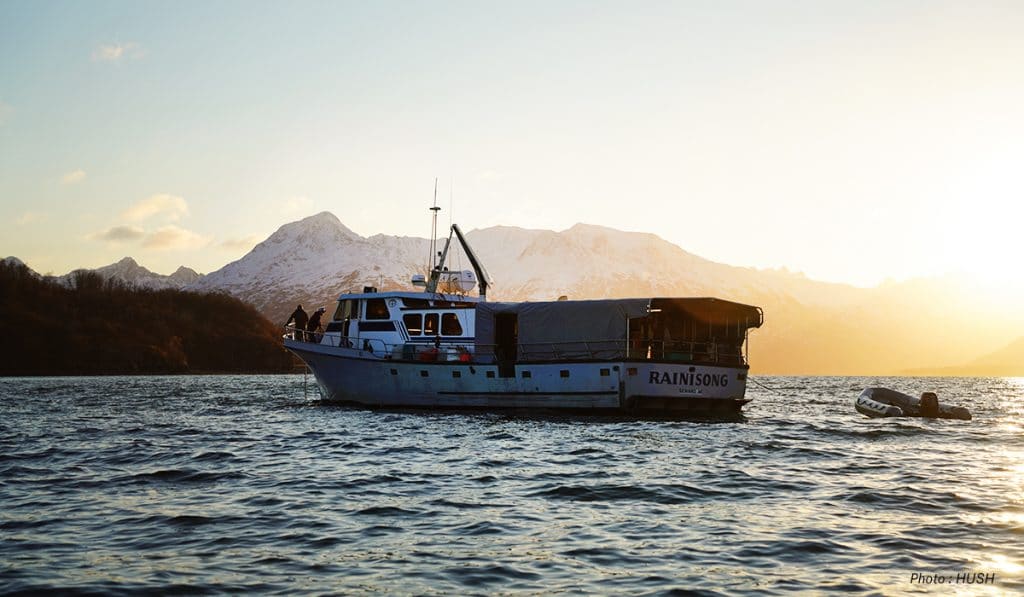
Jess: With COVID and of the state of the world as a whole, was it surreal to be up there and just be able to be around other people? How did that feel?
Dylan: Once we were there hunting, it was nice; you just kind of forgot about all that. We were so far removed from the modern-day world and news, and you can’t just go on Instagram at night. You’re completely tuned out. If you don’t have a Garmin inReach or sat phone there’s no way to talk to anybody. So it was a nice reset in that way.
Jess: You guys were hunting blacktail. What else did you hunt on this trip?
Dylan: Primarily deer. I think everybody had two tags. You can buy up to three in Alaska; we actually bought them locally in Anchorage. With those deer tags you are allowed two foxes per person. Kodiak’s really cool in the sense that they have the red fox we’re used to, but they also have gray fox and cross foxes, which are a mix between the two. It was a cool element to the trip; we would see foxes a lot on the beaches at first and last light.
So deer, fox, waterfowl… a few guys shot waterfowl. We were with two locals who both had mountain goat tags, and one guy from Anchorage actually shot his goat on this trip. I spotted the mountain goats the day before from the boat. They hiked up to go try and hunt them the next day. We were deer hunting from the other side of the bay and actually watched through our spotting scopes as they shot the mountain goat, which was really cool.
Jess: What did a typical day’s routine look like?
Dylan: Every morning we’d wake up in one of the cooler ways that I’ve ever been woken up. We slept in bunks in the bottom of the boat. Every morning the anchor was hauled in on this huge chain; you could hear and feel the giant chain links clanking and then the anchor slapping on the deck. That was basically our alarm clock every day, at least an hour before sunrise.
We’d get up, eat breakfast on the boat, and then get ready and figure out who was going to go hunt what for the day. Then it was into the skiffs—a lot of times it was still dark. We’d then get to a beach and set up for glassing or just start hiking right away. There were a couple days where we’d hang out on the boat and see if we could see deer on the beach first.
It was a lot of like, “Okay, who wants to go up here with me today?” But regardless of the plans, we usually started pretty early and got to the beach by about first light, then started hunting from there. We kept radios close, so if we shot a deer pretty early we could radio the boat. The other thing with Kodiak is the bears. If you fill a tag you have to take care of the meat right then. It’s not like you can hang the meat and just keep hunting with all the bears around. So we would radio in with, “Hey, we need a pickup. We filled a tag.” We’d get it to the boat and then turn around and keep hunting, or take care of the meat on the boat.
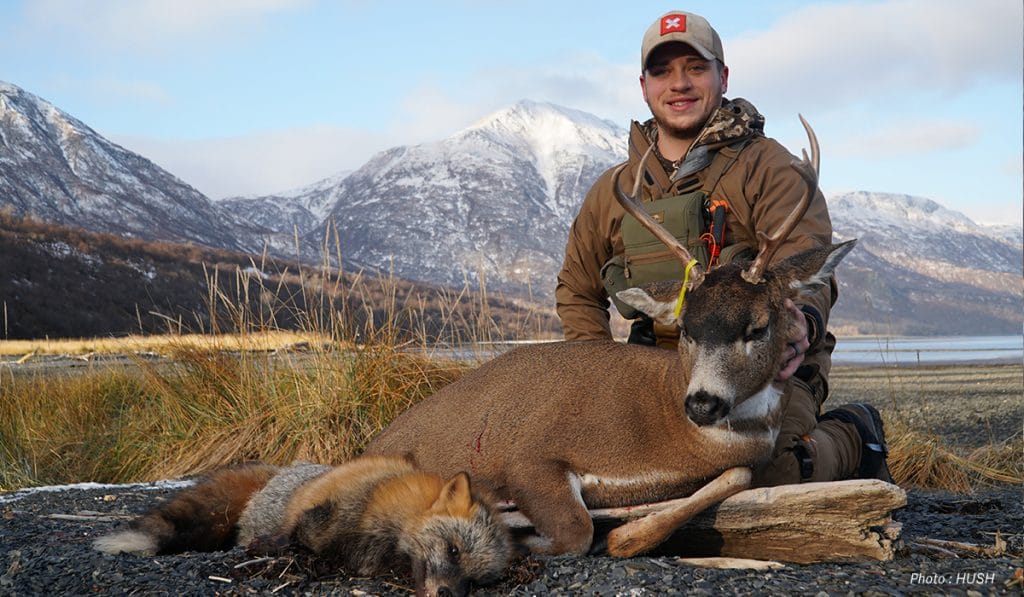
Jess: We deal with bears more than we’d like to here in Montana. How did the Kodiak brown bears compare to Western grizzlies?
Dylan: Kodiak has the most dense population of brown bears. I believe it’s one every square mile or something like that. So, definitely a different element. We’ve got grizzlies here in Montana, but not near as many, and they’re not near as big as the Kodiak bears. I will say, though, because the Kodiak bears are hunted, the consensus that I got from the guys was that they’re typically “better bears”. Whereas a grizzly in Montana, where they’re not hunted, can be much more predatorial toward people.
But yeah, it’s a different dynamic hunting there with all the bears, it makes you pay much more attention to your surroundings, especially while field dressing and packing meat.
Deanna (onX Hunt Creative Team): So, were these the biggest bears you’ve seen?
Dylan: Oh, yeah. We saw one giant brown where I joked that its head was almost as big as some of the black bears I see in Montana. Kodiak brown bears are one of the two largest bears in the world, the other being the polar bear. They’re giant bears—a whole different element. The first day we got dropped off on the beach and immediately saw huge brown bear tracks. I was like, “Sweet, welcome to Kodiak.”
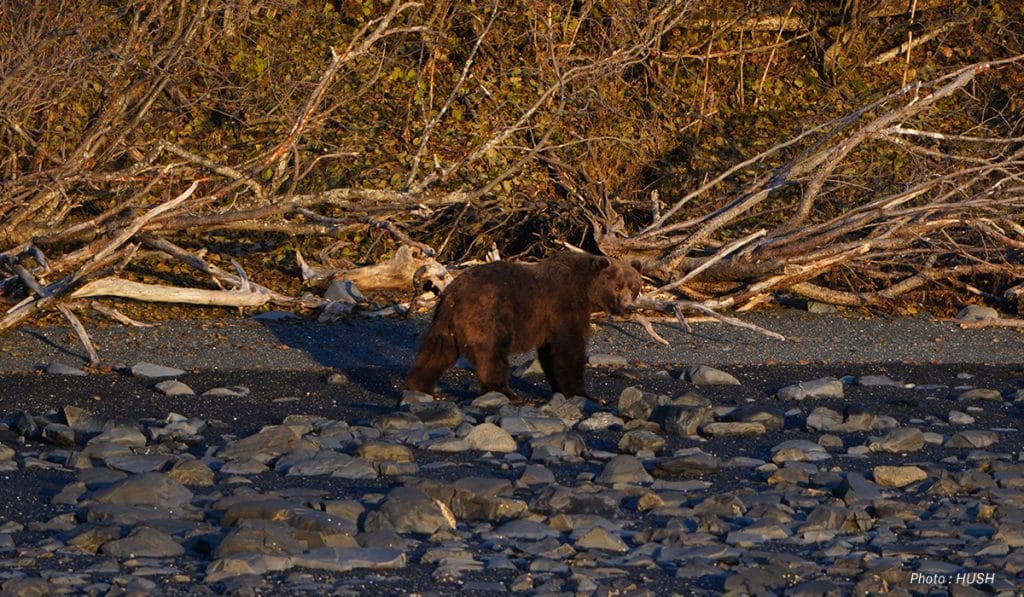
Jess: Was there a particular day of this hunt that really stood out to you?
Dylan: They were all so unique and so different, because we hunted a different area every day. Obviously, the very first day stood out because I had no expectations; all I had seen were videos and read articles about Kodiak and Alaska. Once we were dropped off on the beach, it was just like okay, we’re here now, let’s figure this out.
All your expectations kind of go out the window. We were a quarter-mile into our hike the first day and I realized the terrain itself was way different, and more challenging than what I pictured in my mind. I shot one of my bucks right on the beach, but then right after that we hiked way up high and ended up shooting one that involved a lot more work. Each hunt and day was unique in its own way. Going into the hunt, we all heard and expected it to be wet and poor weather every day, but more often than not it was sunny and nice. The last day we hunted, it felt more like a “true Kodiak” weather experience. We battled the snow, rain, and wind most of the day, so that day stands out in that sense.
Jess: So, any funny moments or stories from the trip?
Dylan: It was an ongoing joke that Kodiak just takes everything from you. We lost so much gear there, it was unbelievable the amount of stuff that we left on the island. Logan, the HUSHIN camera guy, lost the cover off his microphone the very first day. He lost the lens cap the next day, and then he lost another piece of his camera. Then on the fourth day he actually dumped his entire camera into the ocean, so he ended up using my camera to film the rest of the time. It was a slow process; Kodiak slowly stripped his camera away piece by piece.
I lost a knife; Matt was to blame but he graciously gifted me his to make up for it. I lost so many things from my pack; if something wasn’t strapped inside the pack, the thorny bushes would just grab it and pull it off. I also lost the lens cap and sun shade to our camera. Brian from HUSHIN lost a pair of FirstLite gloves. It was an ongoing joke that we’d get back to the boat and be like, “Okay, what did you lose today?”
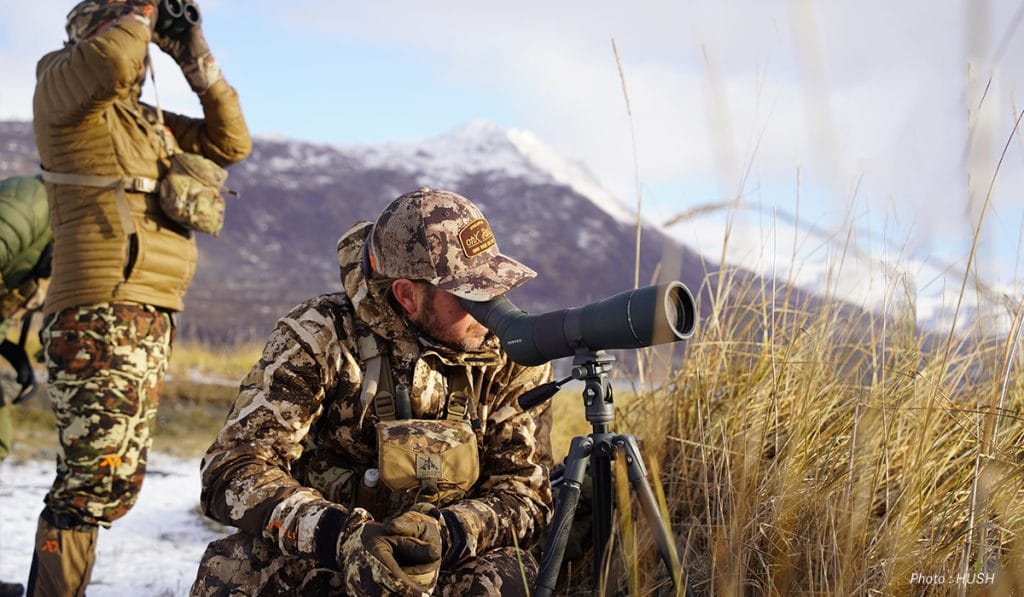
Jess: Did you feel like the gear you brought along was right for the trip? Anything you wish you had packed but didn’t?
Dylan: We had what we needed, but a big part of us having what we needed is because we did a lot of research ahead of time and talked to people who had been up there. I definitely took about twice as much gear as I needed, and I think so did everybody else. We didn’t realize there would be a dryer on the boat. The tide would change so much that sometimes while being picked up we’d have to run out into the ocean to get on the skiff, and so we’d just get soaked. I was preparing for that and brought a lot more gear than I actually ended up using because we were able to dry out gear and boots out every night on the boat. The weather was surprisingly good for Kodiak, but it did get down into the teens a few times. I’m glad I bought a few extra layers for those days.
Deanna: The luxuries of a boat-based hunt! Do you have a preference between the almost “glamping” on the boat and the tent-based hunts you do here in Montana?
Dylan: I appreciate both for what they are. Personally, if I’m out there tent camping, I really enjoy that. I can remember last year or the year before, we did a tent hunt in Montana where it was something like -10F degrees out every morning and we slept in a tent for three days. I actually appreciate those hunts; at the time it’s miserable but looking back, you get a sense of accomplishment, and you’ll remember that experience forever. But I also love the easier camp setups and, really, all hunts. So, I enjoy both and appreciate both for what they are. But for this one, especially with having never been to Kodiak, I didn’t feel guilty for sleeping on a heated boat. Both types of hunts have their places.
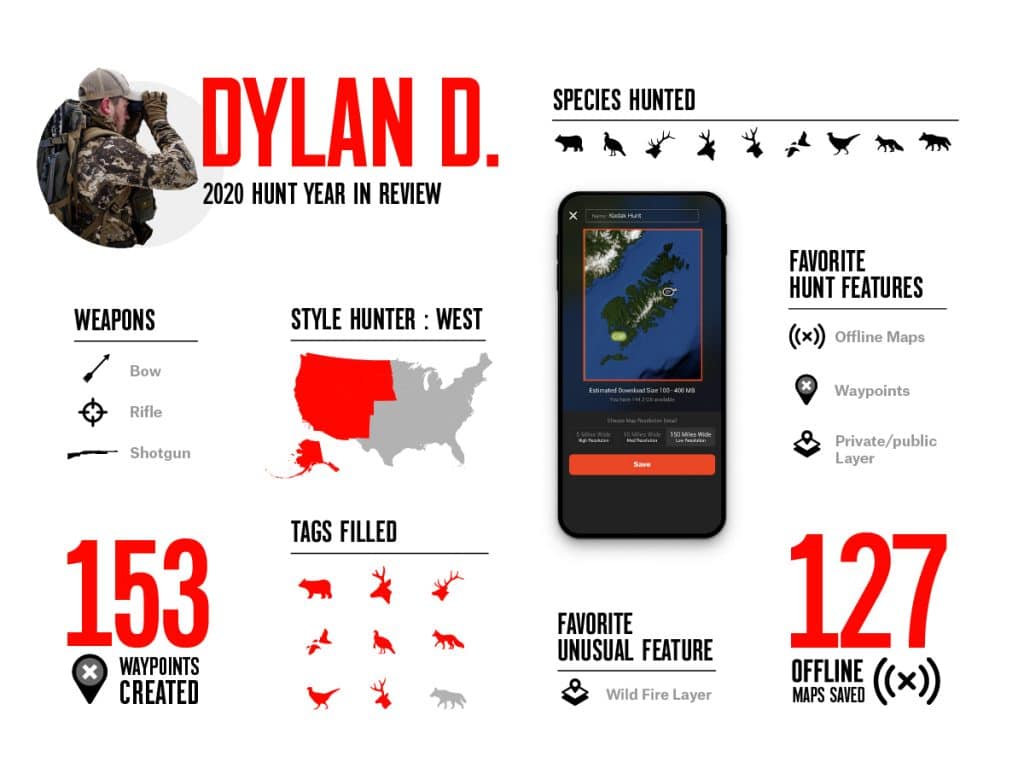
Jess: Any surprising lessons you learned from this hunt?
Dylan: There were so many little things that I didn’t realize go on up there. I’ve never lived or hunted near an ocean and didn’t realize the tides would come in and go out so far. We got dropped off one one morning and started glassing for deer right on the beach, a good 15-20 feet from the water. I was glassing way up high with a tripod, just sitting there, and suddenly I felt something cold underneath me. I looked down and the ocean was already under me and getting on my gear wet. One guy left his rangefinder on the beach where he had shot a deer, and by the time he got to the boat and realized where he had left it, he’s like, “Oh, I know exactly where it’s at.” The captain replied, “Yeah, we’ll go back. But you’re not finding your Rangefinder.” It was five feet under water. So little things like that were pretty cool; things that I had no idea would be there or happen.
Jess: So, did Kodiak hold up to what you’d thought it would be?
Dylan: Yeah, it definitely did. For me, Alaska’s always been a place that I knew I needed to go—I would go—but who knew when. It was a 10-year goal. I’m lucky this opportunity came up this year; it was kind of like a dream come true for me. I just wanted to go to Alaska and experience it. From all the research I’ve done and the people I’ve talked with, Kodiak is the place. It’s got crazy, wild terrain and the weather… it’s just like Kodiak is Alaska. So I was really excited for that. But yeah, it was pretty surreal to find out I was actually getting to go to Alaska when I thought just a few months prior that it was going to be a 10-year dream.
A major part of the trip being such a success was the group of people we were with. From the fishing days with Cory, to the hunting charter with Garrett and Brandon, to the group of guys we hunted with, everything was top notch.
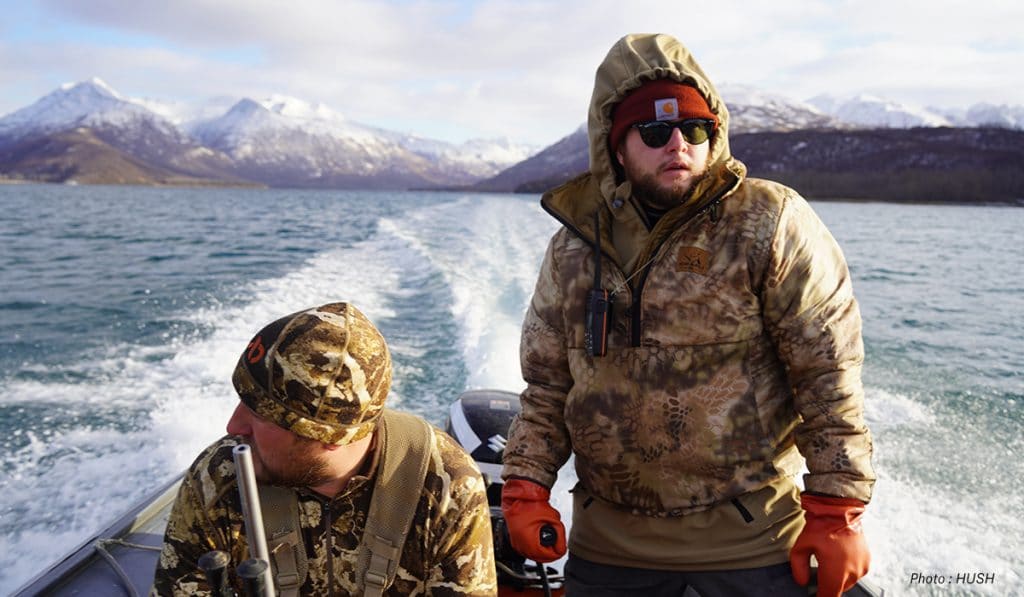
Jess: Would you go back if someone said, “Hey Dylan, I have an extra ticket?”
Dylan: Going on this hunt, I really thought I was going to do it and then be like, okay, I’ve done that in Alaska. That I’d check that off and, if I went to Alaska again, it would be for something else. I really thought that I was going to do it and then be satisfied enough to want to do something else if I ever made it back up. But after having done it, I would go back and do the exact same hunt again.
Having hunted blacktail on Kodiak for a week now, I would go back now and feel a lot more confident to try and find an older, more mature buck than I did. You learn so much, that by the time you have to leave, you feel like you are just getting it all dialed.
Going into like I said I expected to be like, “I’ve hunted deer on Kodiak now. Let’s go do something else in Alaska.” But no, I would totally go back.
Deanna: What hunts do you have in the next year or two that you’re dying to do, now that Kodiak is under your belt?
Dylan: It probably won’t happen in the next couple of years but I’d love to hunt moose in Alaska. But honestly again, I would go back and do the same hunt and be extremely excited to do it. So, really anything in Alaska. I want to get back up there and explore more.
Down here, if I’m hunting elk in Montana and then I go to Wyoming, I’m still kind of hunting the same animals, it’s just a different opportunity. I feel like in Alaska, there’s just so much that I don’t know and that’s why I want to go do it. I feel like we just barely scratched the surface of anything that Alaska has to offer, but I’m glad we did it in Kodiak first because it was a pretty incredible place to start.
Kodiak was one of Dylan’s many hunts in the 2020 season. Born and raised in Montana, Dylan was introduced to hunting by his father, and grew up hunting the sagebrush and coulees of eastern Montana. He now lives in Missoula, where he’s worked at onX for more than five-and-a-half years. He spends as much time as he can in the mountains during archery elk and rifle mule deer seasons, and lists Offline Maps and Waypoints as his most-used onX Hunt App tools.
